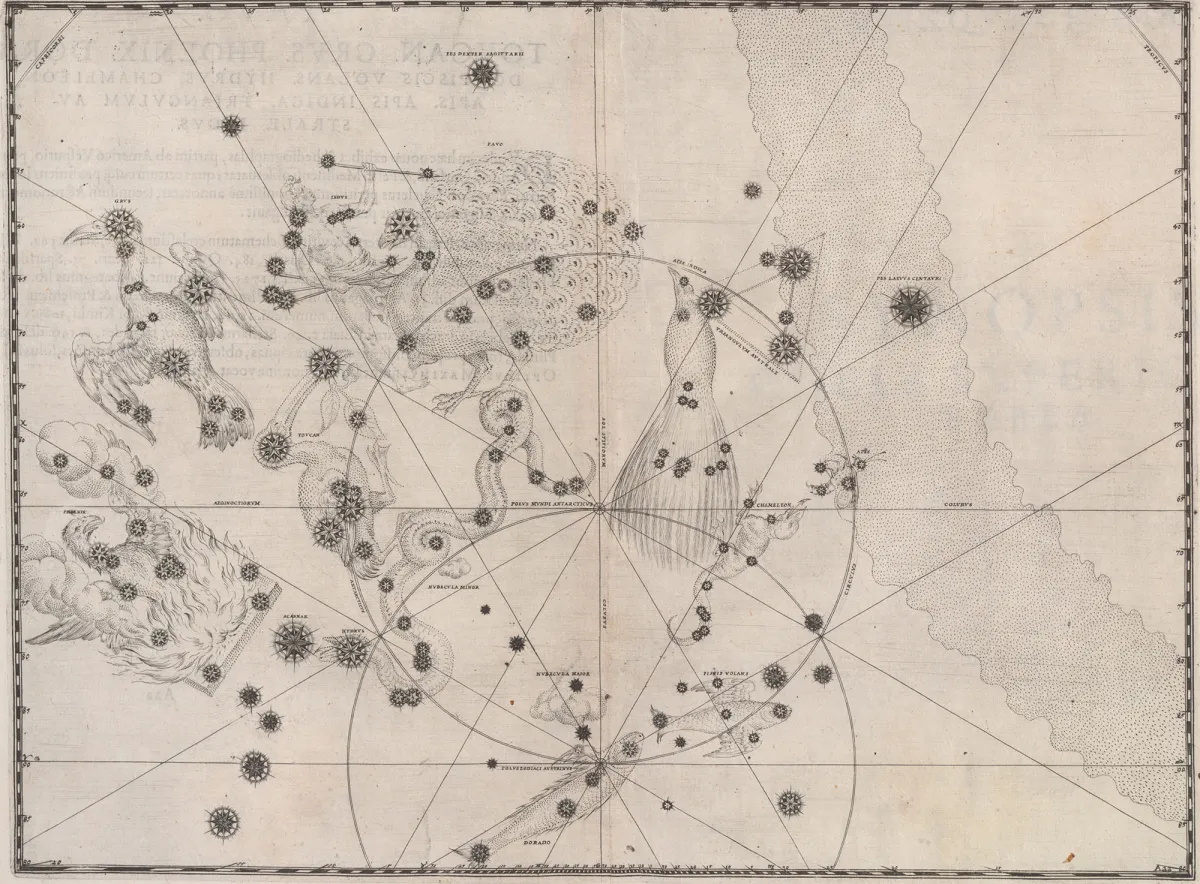Constellation Indus (Indian)

Properties
The constellation is pretty expressionless in its southern part and only between the constellations Pavo and Grus can you find four slightly brighter stars. The area is 294 square degrees and the centre culminates around midnight on August 13 and is not visible from Central Europe. [9, 15]
| IAU Name | Indus |
| IAU Genitive | Indi |
| IAU Abbr. | Ind |
| English Name | Indian |
| Culmination at local midnight | 11 August |
| Season (Latitude +0.0°) | April … January |
| Right Ascension (J2000.0) | 20h 28m 41s … 23h 27m 59s |
| Declination (J2000.0) | -74° 27' 16" … -44° 57' 32" |
| Area | 294 deg2 |
| Neighbours (N↻) | Mic, Sgr, Tel, Pav, Oct, Tuc, Gru |
Catalogues

History
The constellation, which is supposed to represent an Indian, was recorded by Johann Bayer in his Uranometria in 1603. The Latin name Indus is more appropriate for the inhabitants of India, but the figural concept is reminiscent of an Indian from the North American prairies. [7, 21]